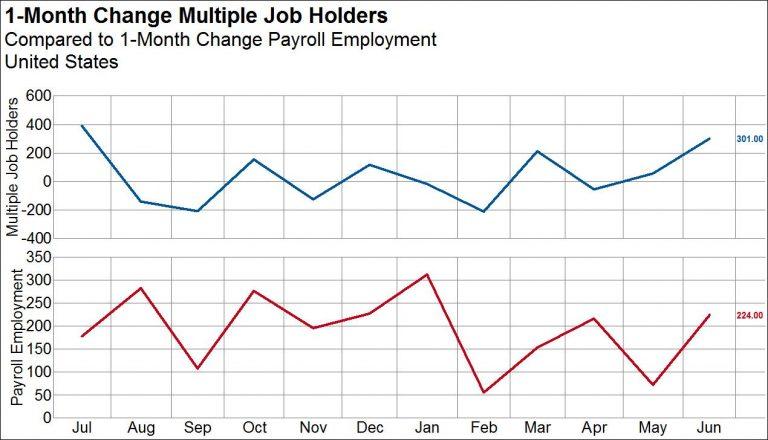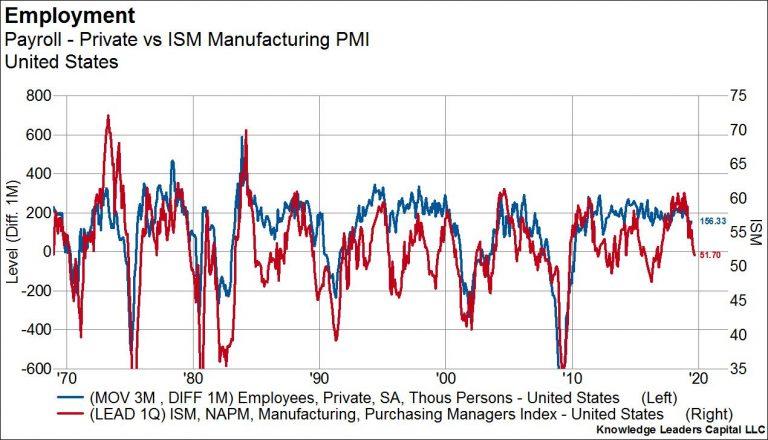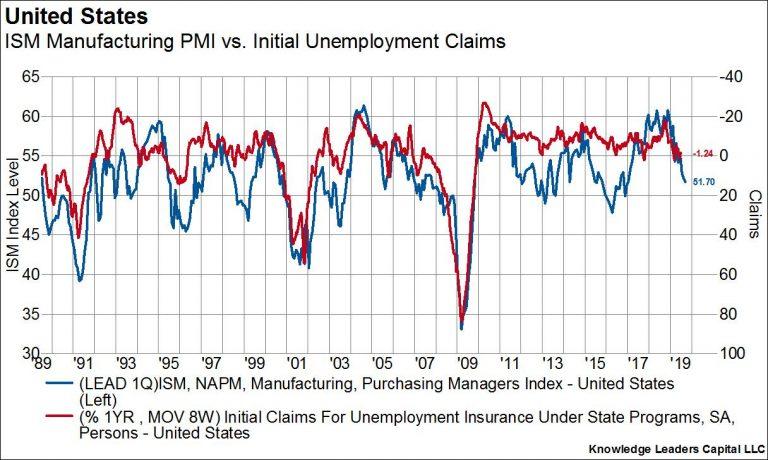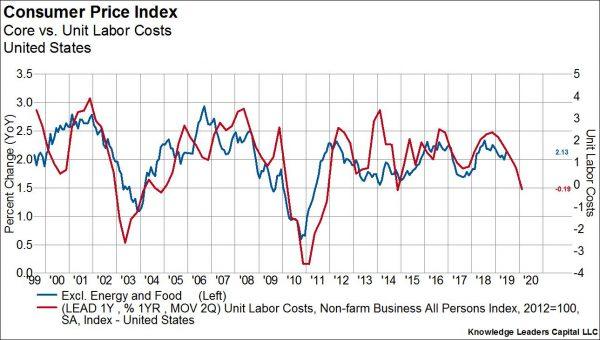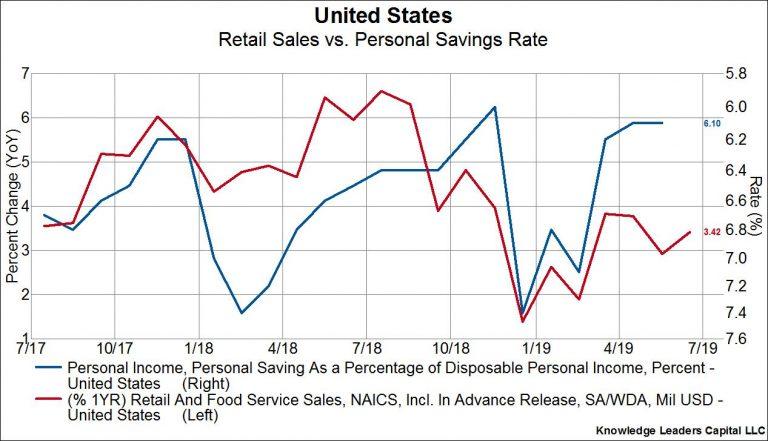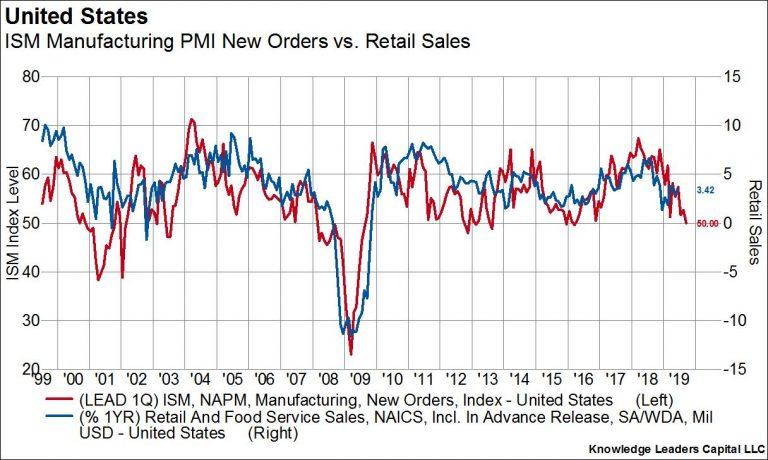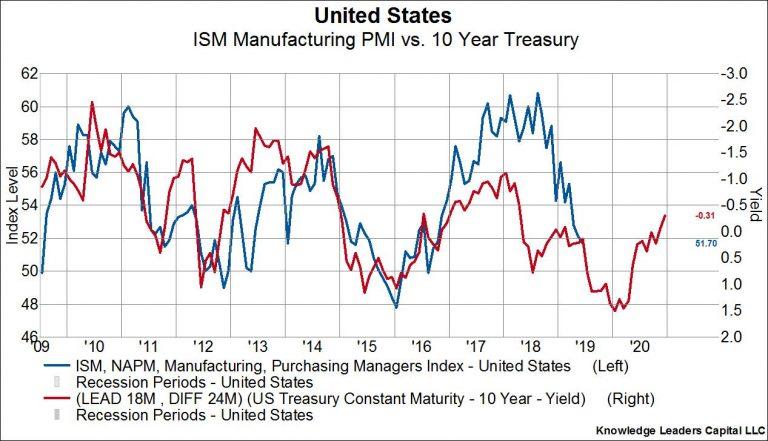Authored by Bryce Coward via Knowledge Leaders Capital blog,
We have been surprised over recent weeks to read a slue of commentary proclaiming that the economy is in great shape and Fed Chairman Powell is just pandering to markets by signaling rate cut(s) in July and beyond. Specifically, “strong” readings from the employment report, inflation and now retail sales have received much attention even as much more leading data continues to point to weakness among these very indicators in the second half of 2019. In this post we’ll try to show why Chairman Powell is right to cut rates here and now and why incoming data has done little to alter the intermediate-term outlook of a slower economy ahead.
Employment
The recent employment report is probably the most misunderstood of all the recent economic data. Yes, non-farm payrolls came in at 224K vs an estimate of 160K. However, the report paints a much different picture when you lift up the hood. For example, the important hours worked component sank to a 1% YoY growth rate, a level only breached on the downside two other times during this recovery (in 2016 and 2014). More striking, though, is the fact that multiple job holders increased by 301K, outpacing total payroll growth by 77K. That means that people picking up a second job (think college-age kids picking up two summer jobs) explains the entire growth in payrolls for the month of June. Single job holders actually decreased by 77K.
What’s more, employment is a lagging indicator. It tells us practically nothing about the state of the economy now, but rather its state three months ago. The ISM manufacturing PMI, which is a leading indicator and leads payroll employment by a quarter, points to slower payroll growth in the immediate future. The ISM manufacturing PMI also points to a rise in initial unemployment claims compared to year-ago levels for at least the next quarter. Therefore, not only was the employment report not “strong”, the next few employment reports could get markedly weaker as the summer progresses.
Inflation
Core CPI reported last week increased by 2.1% YoY compared to estimates of 2% YoY. Core producer prices increased by 2.3% YoY compared to estimates of 2.2% YoY. Never mind the fact that intermediate goods prices are now growing at just 1% and the earliest stage goods prices are declining at 5% YoY – that is, there is price disinflation baked into the pipeline. The price numbers coming in higher than expected have been read to mean there is little slack in the economy. However, these stats too are lagging indicators. For example, unit labor costs lead core consumer prices by 1 year, and unit labor cost growth just slipped into negative territory for the first time since 2014 and 2010 before that. This suggests pricing pressure will abate through the middle of 2020.
Retail Sales
Retail sales were released today and showed growth of .4% MoM compared to expectations for .1% growth MoM. This large “beat” looks good on the surface, but we also must consider how those retail sales are being funded. If consumers were saving a lot less in order to fund current consumption, then a strong retail sales number wouldn’t be very indicative of future retail sales since depleting one’s savings rate cannot go on indefinitely. In fact, US consumers have reduced their savings rate from 7.4% to 6.1% while YoY retail sales growth has improved from a little over 1% to 3.4%. Given that the 6% mark is pretty much the lowest savings rate that has prevailed this entire expansion, our dry ammo to fund faster consumption growth is about shot.
Moreover, ISM new orders actually lead the retail sales figures by 1 quarter and ISM new orders just hit a multi-year low of 50. Readings above 50 indicate expansion while readings below 50 indicate contraction. The ISM is telling us retail sales growth could slow markedly by the end of the summer.
Outlook for the ISM
It’s one thing to look at the current level of the ISM report and its components to forecast the direction of other economic variables. After all, the ISM is about the most leading economic indicator out there. But, based on how changes in interest rates affect the growth rate of the economy with a lag, we can also forecast the intermediate direction of even this leading indicator. Currently, the rise in long-term US rates we saw from 2016-2018 is still being felt in the economy and will continue to be felt through the rest of this year.
This suggests that the ISM manufacturing index faces a difficult path ahead. When the most leading economic indicator has more downside, it may be prudent to look through “strong” lagging economic data. That may be just what Powell is doing now. If he wasn’t doing so, we’d be a lot more scared a slowdown turning into a recession.
via ZeroHedge News https://ift.tt/2GjuxVE Tyler Durden
